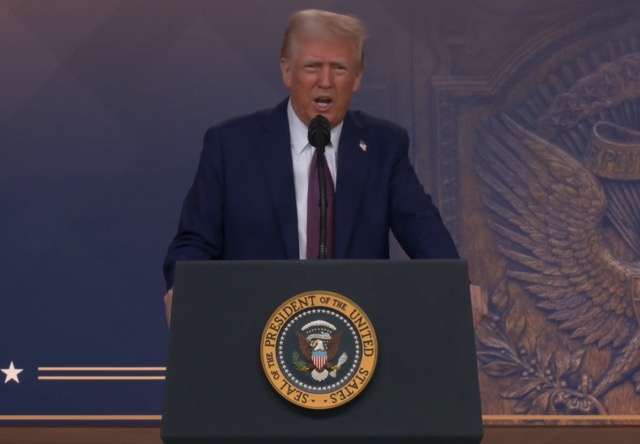In a surprising turn of events, the White House abruptly canceled a highly anticipated joint news conference between U.S. President Donald Trump and Israeli Prime Minister Benjamin Netanyahu that was scheduled for the evening of April 7, 2025. The event, expected to be a significant moment of diplomacy and media engagement, was instead replaced with a more private Oval Office session between the two leaders and a select group of reporters.
Why the sudden change? What’s really going on behind the scenes? And more importantly, what does this mean for U.S. foreign policy, the situation in the Middle East, and global diplomatic relations?
This article dives deep into the circumstances surrounding the cancellation, what was supposed to be discussed, and the broader implications for international politics. Buckle up—we’re going beyond the headlines.
Background of the Scheduled News Conference
This wasn’t just another routine diplomatic meetup. The planned joint press conference between Trump and Netanyahu came at a particularly tense time on the global stage. The White House had recently implemented sweeping “Liberation Day” tariffs that rattled international markets, while tensions in the Middle East continued to rise over the ongoing Gaza conflict and growing concerns about Iran’s nuclear ambitions.
Both leaders had strong incentives to hold this joint appearance. For Trump, it was a chance to project strength and clarity on U.S. foreign policy amid backlash over his aggressive economic moves. For Netanyahu, the opportunity to stand beside a key ally like the U.S. President would reinforce his own position both at home and abroad.
According to initial press briefings, the event was supposed to focus on several high-stakes topics:
- The evolving situation in Gaza, including humanitarian concerns and military strategies.
- Renewed fears over Iran’s nuclear development.
- Trump’s controversial tariff strategy and its impact on allies, including Israel.
Media from around the world had been preparing to cover the event live, and political analysts were bracing for what could’ve been major diplomatic announcements. Then, seemingly out of nowhere, the plug was pulled.
Why Was the News Conference Cancelled?
So what really led to the cancellation?
The White House’s official explanation was vague at best. A brief statement indicated that the format was simply being “adjusted,” with no further clarification. Instead of a full press conference, a smaller media pool would be allowed to ask a limited number of questions inside the Oval Office—a significant departure from the original plan.
That left the door wide open for speculation.
One theory is that the cancellation was strategic. Given the unpredictability of both Trump and Netanyahu when speaking to the press, advisors may have opted for a more controlled setting to minimize the risk of controversial or off-message remarks. Another possibility is that behind-the-scenes negotiations, particularly regarding Iran, were too sensitive to expose in a public forum.
Others point to mounting protests outside the White House and online outrage over Trump’s recent economic measures, suggesting the administration didn’t want to risk the optics of a joint appearance with a foreign leader while domestic unrest simmers.
Of course, it’s also worth considering that this kind of abrupt change fits a larger pattern of unpredictability in Trump’s communications strategy. It keeps opponents guessing and often shifts the media narrative in the administration’s favor—at least temporarily.
Oval Office Briefing: A Shift in Communication Strategy
Instead of the grand stage of a White House press briefing room, reporters were ushered into the Oval Office—a setting that’s as historic as it is exclusive. Here, the atmosphere was tightly controlled. No podiums, no formal statements—just a brief exchange of remarks and a few questions tossed to the two leaders.
What’s the difference? Well, everything.
For starters, press conferences are designed for transparency. They’re public, structured, and include journalists from a variety of outlets, all vying to ask critical questions. An Oval Office media availability, on the other hand, is limited in scope. Only a handful of reporters are allowed in, and the tone tends to be more ceremonial than investigative.
This subtle but significant shift raises concerns. Advocacy groups and journalists have already started voicing worries that the administration is trying to dodge hard questions and reduce accountability. Transparency is a cornerstone of democracy, and avoiding full press briefings chips away at the public’s right to understand major diplomatic developments.
Still, from a political perspective, the Oval Office setup gave Trump and Netanyahu a chance to appear united and in control—without the chaos of a full-blown media scrum. Whether that was worth the hit to transparency remains up for debate.
Trump’s “Liberation Day” Tariffs and Global Economic Fallout
As if geopolitical tensions weren’t high enough, President Trump recently rolled out an economic shockwave: the “Liberation Day” tariffs. Marketed as a bold move to restore American manufacturing dominance and counteract foreign manipulation, these reciprocal tariffs hit a wide range of countries—and the global response was swift.
Stocks tumbled. Allies fumed. Trade partners began recalculating their policies, and economists warned of a new era of economic nationalism.
For Israel, a close economic and military ally of the United States, these tariffs couldn’t have come at a more complicated time. Netanyahu arrived in Washington likely seeking clarity and perhaps exemptions or modifications for Israeli industries affected by the new trade rules.
But make no mistake—these tariffs are more than just an economic policy. They’re a signal. Trump is doubling down on his America First doctrine, and he expects allies to fall in line or face the consequences.
This backdrop added even more weight to the now-canceled press conference. The world wanted to hear how Netanyahu would respond, whether any special arrangements had been made for Israel, and how these economic moves would affect military and technological cooperation between the two countries.
Now, without a public briefing, we’re left piecing together sound bites and insider reports to understand what deals—if any—are being made behind closed doors.



